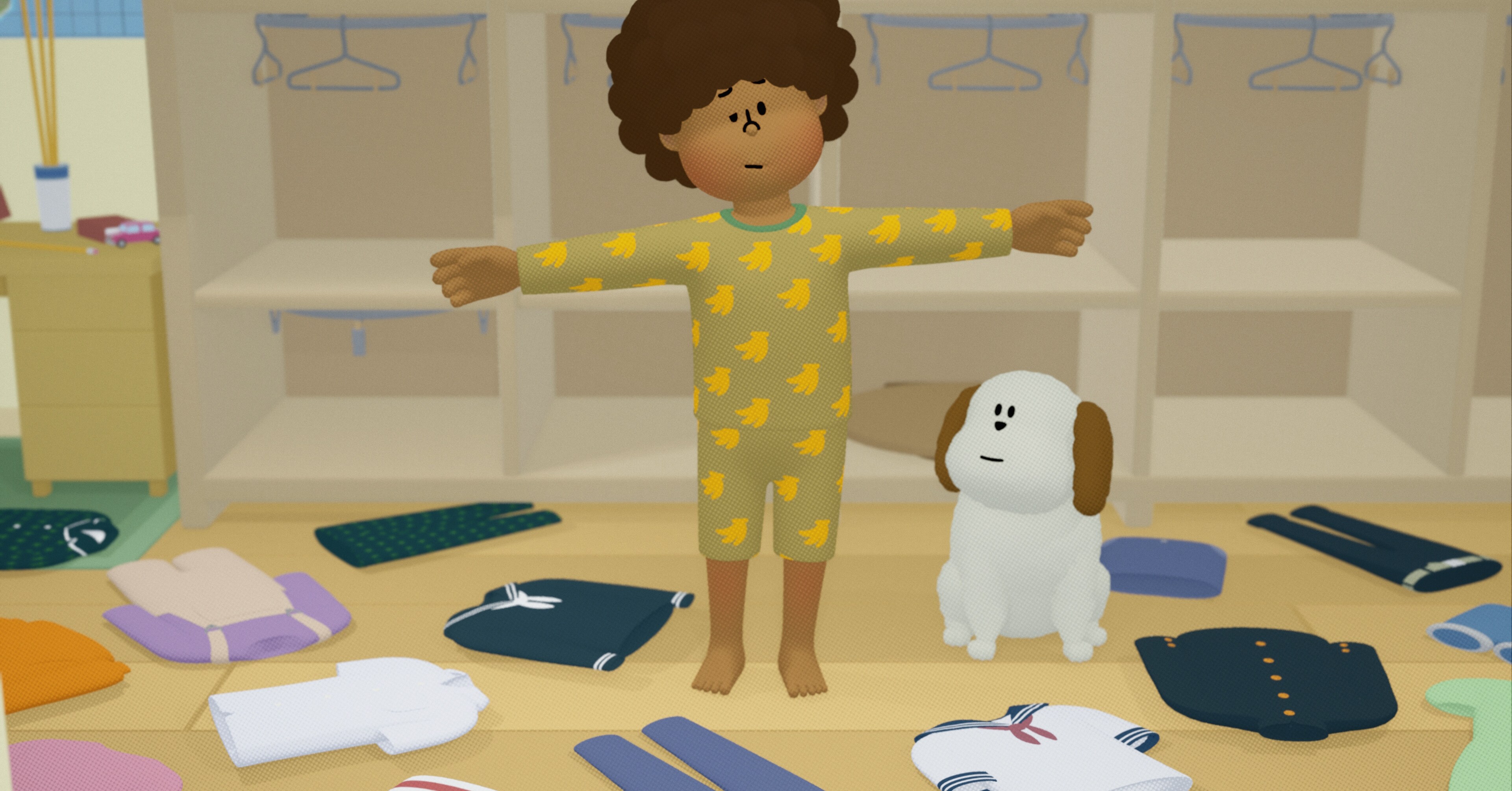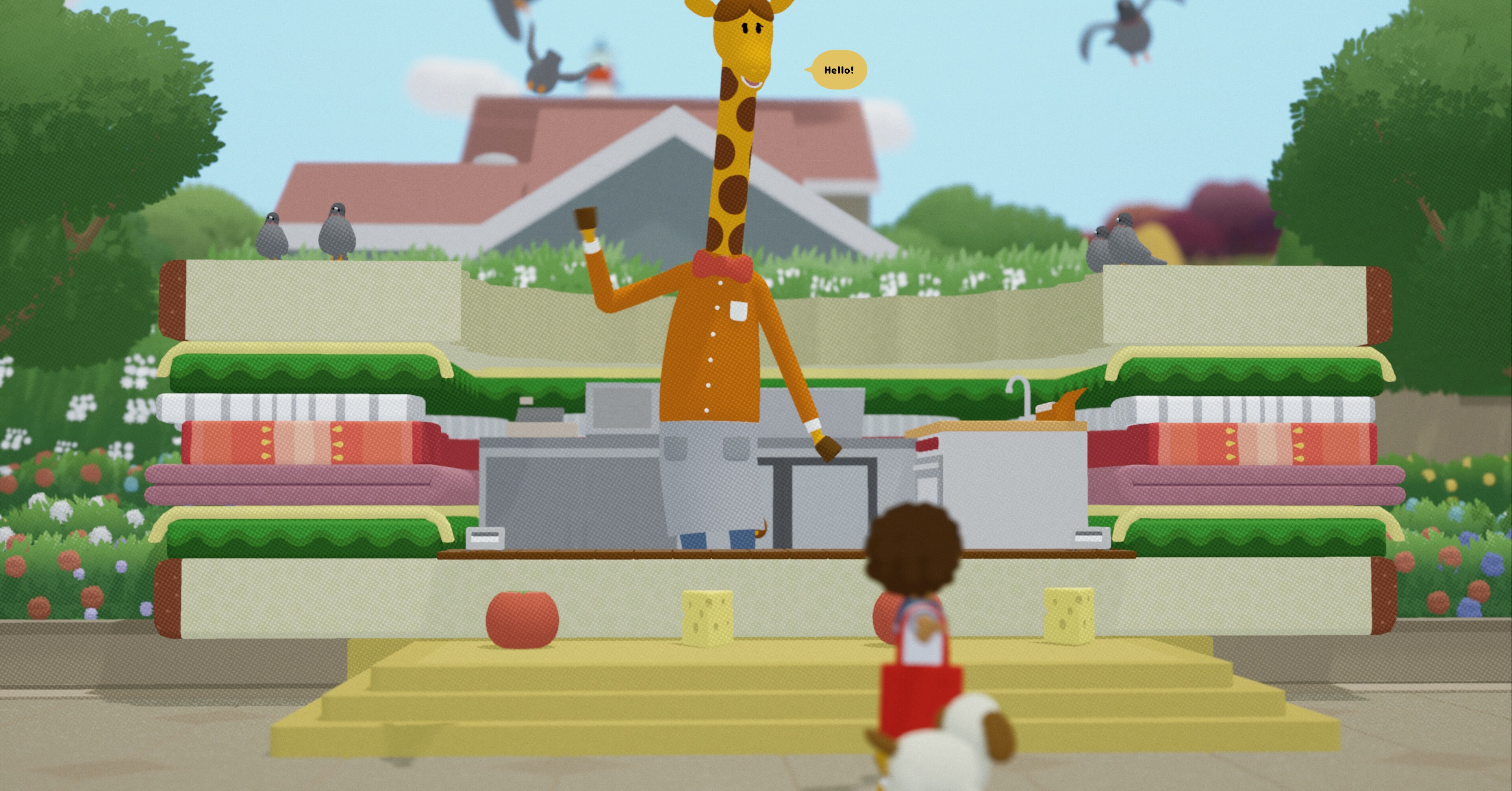Demoing his new game To a T to press, Keita Takahashi, the creator of Katamari Damacy and one of gaming’s great absurdists, was asked by Digital Trends’ Giovanni Colantonio what drew him to make such oddball games. According to Colantonio, Takahashi regarded the journalist sadly and said, “I was trying to make a normal one this time.”
Having played through the game, I’m happy to report that Takahashi’s innate playfulness, love of nonsense, and talent for wacky character designs — my favourite in To a T is Pengustav, a weight-training penguin — remain undimmed. But I’m equally happy to report, for Takahashi’s sake anyway, that he didn’t exactly fail in his quest. To a T is a game with a relatable story (sort of), told in the conventional idiom of a narrative action-adventure, and accessible to the broadest possible audience (it will be a great game for kids and families). And this matters, because Takahashi has a heartfelt and plainspoken point to make.
To a T’s blend of silliness and real-world sensitivity are encapsulated in its premise. The player assumes the role of an ungendered 13-year-old whose body is in the shape of a T, arms sticking rigidly out from their sides. This presents them with all kinds of daily challenges, from bullying at school to the awkwardness of eating cereal with a really long spoon.
On one level, it’s a game-dev in-joke — the “T-pose” is a default pose used by character modellers and animators, and sometimes bugs in games’ code leave characters stuck in this pose to slapstick effect. It’s as if Takahashi wondered what life would be like for these unfortunate avatars. But his humor and empathy, and his determination to keep his strange story just a little bit grounded, lead him to the T-pose as a metaphor — for physical disability, or neurodivergence perhaps, or anything that confronts a young life with the daily struggle of being different.

The teen and their adorable puffball of a dog (you name them both) live in a hilly seaside town that tumbles from lovely, sunny realism — suburbs, parks, commuter trains, wind turbines — into the innocent weirdness of a children’s book, where a giraffe called Giraffe runs a sandwich shop, the barber is a thwarted crab, and there’s a luminous forest of giant mushrooms on the edge of town.
For all his surrealism, Takahashi is a keen observer of normality; think of all the lovingly rendered everyday objects and scenes in Katamari, waiting to be rolled up. Working with his boutique San Francisco studio Uvula, he grounds To a T in the repetition of the teen’s daily routine: brushing teeth, choosing shoes, walking to school. No matter how wild the events of the game get (and they get pretty wild), the routine persists. The game is structured episodically, like a TV show, and it keeps delightfully cutting to the opening and closing credits with their catchy theme songs, “Perfect Shape” and “Giraffe Song.” (This device was also used to great effect in Capcom’s violent 2012 anime-style action game, Asura’s Wrath. More games should do this.)
Within this structure, Takahashi leaves some room for free exploration and play. You can collect coins to buy clothing and indulge in competitive eating minigames at Giraffe’s various food stalls. (Takahashi’s longstanding obsession with food and eating is still in full effect.) But To a T is a surprisingly linear and story-forward game that mostly conveys you gently from one cutscene to the next.

However, Takahashi is too restless and prone to boredom to get stuck following the rutted paths of some screenwriter’s playbook. You might be surprised to find that, as soon as episode 4, the teen has already made friends with the bullies, is happy at school, and has learned how to control their special skill, which allows them to fly by pirouetting into the sky like a cross between a ballerina and a tornado. To a T then blows its storyline open through a series of wildly unexpected perspective shifts, followed by a sensationally bizarre reveal that nonetheless brings home the game’s point about embracing imperfection and difference.
It’s a simple lesson, straightforwardly conveyed. But it’s not simplistic — Takahashi is too wily, too sensitive to human foibles, too playfully questioning for that. There’s a moment, played for laughs but still ominous, when the townsfolk seem briefly persuaded that uniformity is the way forward. Naturally, it falls to the foodie Giraffe, contemplating a textureless and flavorless cube of popcorn, to point out the flaw in this thinking. “Believe in yourself, you’re the perfect shape!” proclaim the bow-tied Greek chorus of backing singers in the theme song. But Takahashi (who wrote the lyrics) is gently skeptical of these kinds of affirmative mantras, too. “I don’t have any idea what perfect means,” the song concludes. “I’m not afraid to be me.” He certainly isn’t.
To a T was released May 28 on PlayStation 5, Windows PC, and Xbox Series X. The game was reviewed on PC using a prerelease download code provided by Annapurna Interactive.
The post With To a T, Keita Takahashi almost made a normal game appeared first on Polygon.




